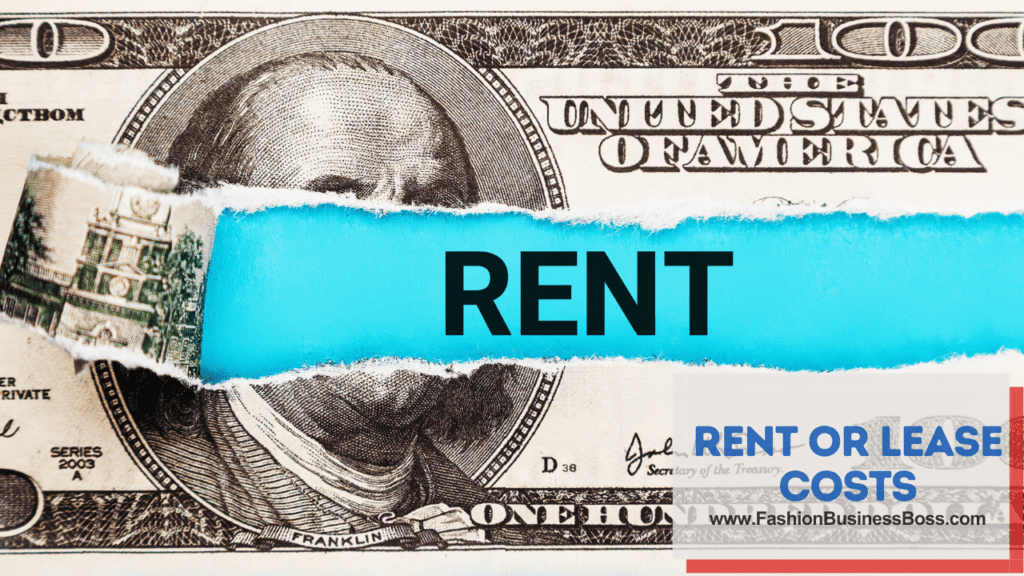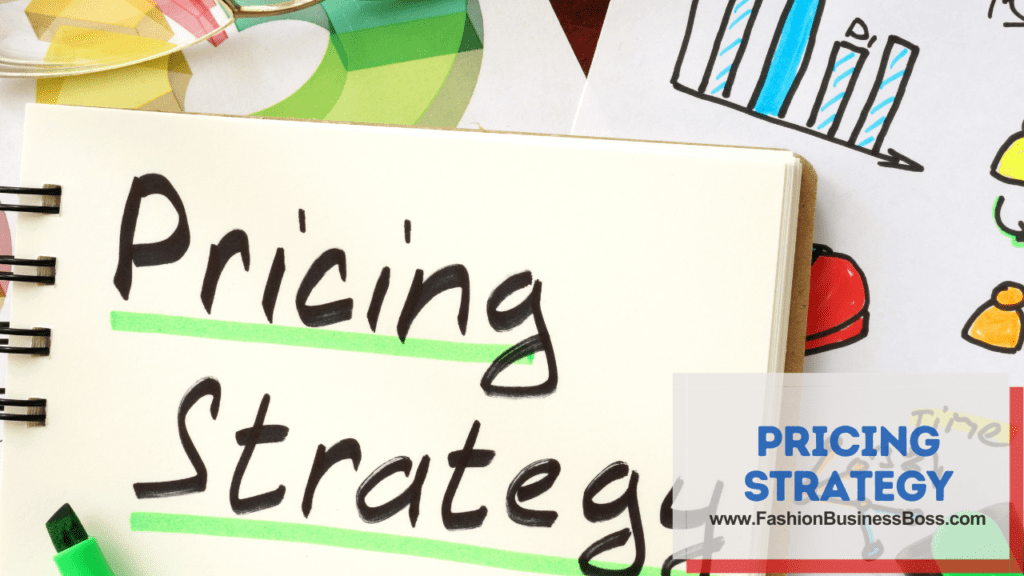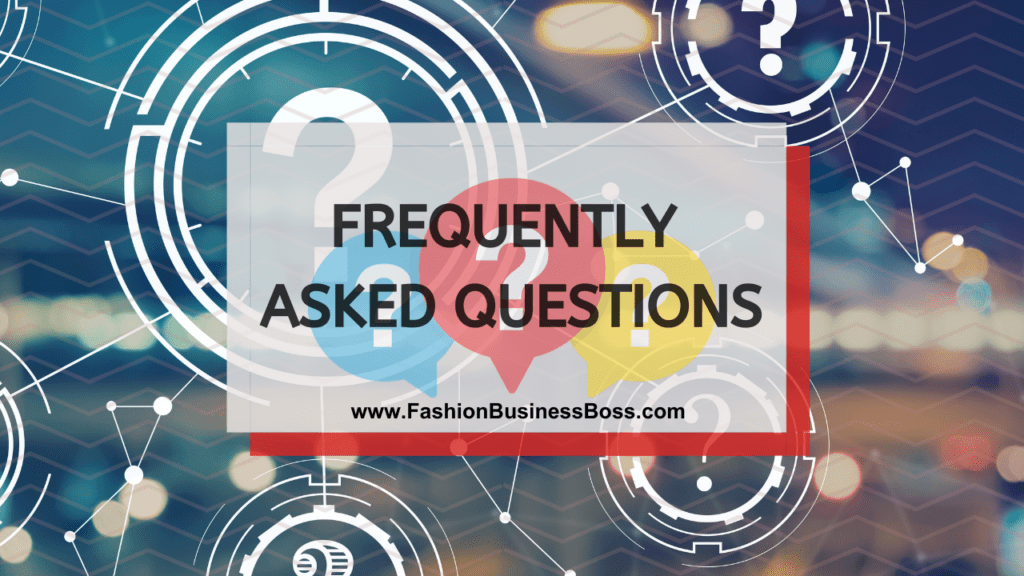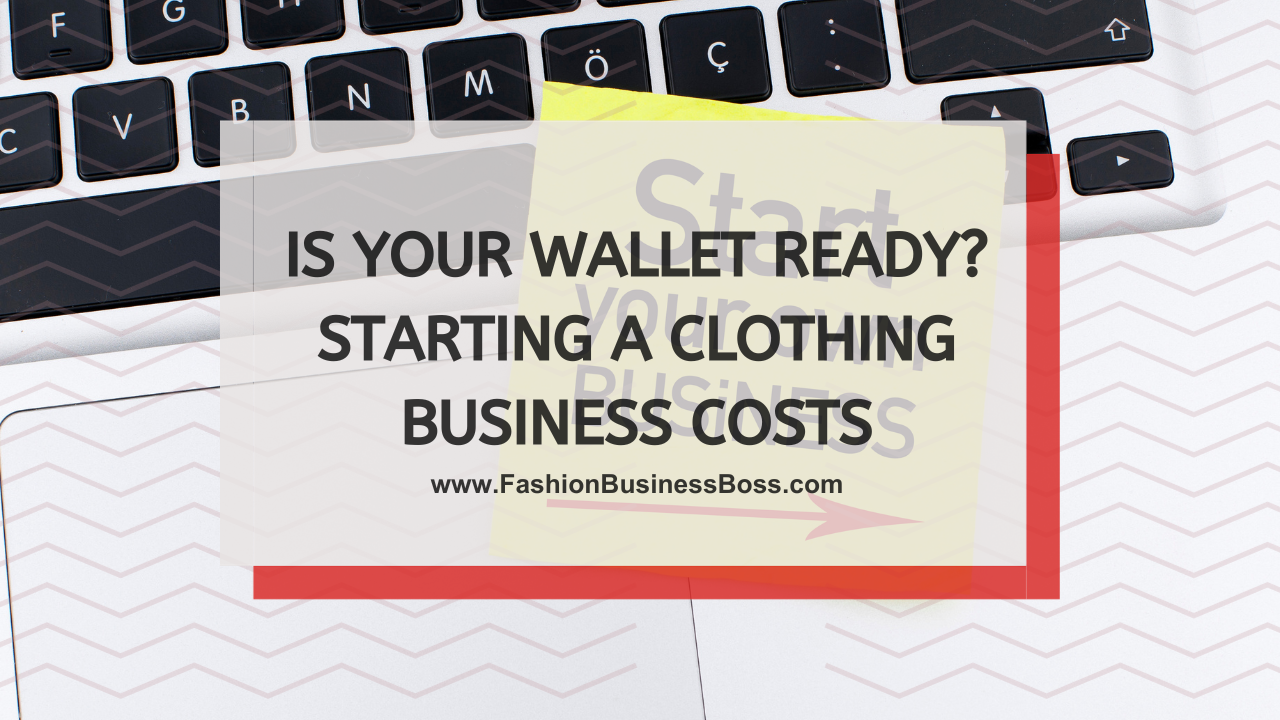Starting a clothing business can be an exciting venture. However, it’s essential to understand the costs involved to embark on this stylish journey effectively.
Here are some key expenses when starting a clothing business: rent, inventory, packaging, and business insurance. Budget wisely for a stylish start.
In this article, let’s dive into the details of how much it typically costs to start a clothing business.
Rent or Lease Costs

Rent or lease costs are a critical consideration when establishing a physical store for your clothing business. This expense can fluctuate substantially based on several factors:
The area where you choose to set up shop plays a pivotal role in determining the cost. Prime shopping districts with high foot traffic generally demand higher rent, while less prominent areas offer more affordable rates.
The size of the space you require directly impacts the cost. Larger retail spaces typically come with higher rent, so it’s essential to balance your needs with your budget.
Rental prices can also be influenced by local economic conditions and demand for commercial space. In a competitive market, prices may rise.
It’s crucial to evaluate your business’s financial capacity and the potential benefits of your chosen location. A prime location can attract more customers but might require a more substantial financial commitment, whereas a less prominent area could be cost-effective but may have lower foot traffic. Finding the right balance between rent and location is vital for your clothing business’s financial stability.
Read more about: From Wardrobe to Wallet: Making and Selling Your Own Clothes
Inventory Management Software
When it comes to managing your inventory, utilizing inventory management software is a wise choice. This software serves as a powerful tool for overseeing your stock, orders, and customer information. Its primary advantage lies in simplifying your daily operations while enhancing the quality of customer service.
With inventory management software, you can effortlessly monitor your stock levels, ensuring that you never run out of essential items or overstock items that might not sell quickly. This balance is crucial for maintaining a smooth and efficient supply chain.
It aids in keeping a close eye on customer orders. By tracking these orders accurately, you can provide customers with reliable delivery estimates and promptly address any potential issues, fostering trust and satisfaction among your clientele.
Embracing inventory management software is a practical approach to optimize your business processes, making them more efficient and customer-centric. It’s a valuable asset for any content copywriter like you aiming to excel in the competitive world of blogging and improve your Google ranking.
Photography and Product Images
Allocating resources to obtain top-tier product photographs is a wise investment when it comes to presenting your clothing offerings. These well-captured images play a pivotal role in conveying the essence of your products on your website and in your marketing materials. Their importance cannot be overstated.
High-quality product photography, captured by a professional, has the power to draw potential customers to your offerings. It enables you to present your clothing in the best possible light, highlighting their unique features and visual appeal. This, in turn, can significantly enhance your ability to attract and engage with your target audience.
Moreover, professional product images help build trust and credibility among potential customers. When they see clear, detailed, and professionally shot photographs of your clothing, it instills confidence in the quality and authenticity of your products.
Prioritizing top-notch product photography is a smart move for effectively showcasing your clothing line, both on your website and in your marketing endeavors. It’s a fundamental aspect of your content copywriting journey, designed to captivate your audience and drive interest in your offerings.
Returns and Refunds

It’s prudent to incorporate a well-thought-out approach to handling returns and refunds into your customer service strategy. This involves creating a straightforward and equitable policy that demonstrates your commitment to customer satisfaction.
By planning for returns and refunds, you show customers that you value their experience and are prepared to address any issues they may encounter with their purchases. A clear policy helps set expectations, ensuring that customers understand the process and feel more confident when making a purchase.
Transparency is key in this regard. When customers know that they can return or request a refund for a product that doesn’t meet their expectations, it fosters trust in your business. It’s like a safety net, assuring them that they won’t be left dissatisfied if something goes wrong.
Incorporating returns and refunds into your customer service strategy is about creating a reliable and trustworthy shopping experience. It’s a simple yet effective way to build strong relationships with your customers, ensuring their confidence in your brand and encouraging repeat business.
Read more about: Funds and Fashion: Startup Costs for Your Clothing Store
Branding and Packaging
Establishing a brand identity, encompassing elements like logos, labels, and packaging, is a pivotal step in making your clothing stand out in the market. The significance of this cannot be overstated.
Brand identity is similar to your clothing’s unique personality; it’s what makes it recognizable and memorable. A well-crafted logo, for instance, serves as a visual symbol of your brand, making it easier for customers to recall and identify your products amidst a sea of choices.
Likewise, labels and packaging play a crucial role in conveying your brand’s values and quality. When done thoughtfully, they can evoke positive feelings and perceptions among your customers. This, in turn, can make your clothing more appealing and desirable.
The process of crafting a strong brand identity isn’t just about aesthetics; it’s about creating a distinct and lasting impression in the minds of your target audience. It sets you apart from competitors and enhances the overall appeal of your clothing, ultimately contributing to your brand’s growth and recognition in the market.
Seasonal Trends
It’s essential to keep yourself informed about the latest fashion trends and adapt your inventory accordingly with each changing season. This strategic adjustment ensures that your clothing offerings are in sync with what’s currently in demand, which can have a positive impact on your sales.
Fashion trends, much like the seasons, change over time. By staying updated, you can cater to the evolving preferences of your target audience. For example, during the colder months, customers are more likely to seek out warm and cozy clothing, while in the summer, lighter and breathable fabrics become more desirable.
Aligning your inventory with these seasonal shifts means you’re offering what customers are looking for at any given time. This increases the appeal of your clothing and can lead to higher sales volumes as customers are more likely to purchase items that are both stylish and suitable for the current season.
Pricing Strategy

Crafting an effective pricing strategy is a fundamental aspect of managing your clothing business. This strategy should take into account three crucial factors: your costs, your competition, and your target market.
Firstly, it’s important to have a clear understanding of your costs. This includes not only the production or acquisition cost of your clothing but also overhead expenses like rent, utilities, and employee salaries. By calculating your total expenses, you can determine a pricing structure that ensures you cover these costs while making a profit.
Secondly, analyzing your competition is vital. Research what similar clothing items are priced at in the market. This information will help you position your clothing competitively, whether you choose to match, undercut, or provide added value compared to your competitors.
Lastly, your pricing strategy should align with your target market’s expectations and willingness to pay. Understanding your customers’ preferences and budget constraints will guide you in setting prices that resonate with them.
Read more about: Garments for Trade: Designing Your Clothes for Sale
Customer Engagement
Actively connecting with your customers is a key aspect of your business strategy. You can do this through various means like social media, email marketing, and by seeking and valuing customer feedback. The goal here is to create a devoted customer community, which, in turn, can lead to customers returning to make repeat purchases.
Social media offers a platform to interact with your audience in a more personal and immediate way. By sharing relevant content and responding to comments and messages, you can build relationships with your customers, making them feel connected to your brand.
Email marketing is another valuable tool. Sending regular updates, promotions, and helpful information through email keeps your brand in the minds of your customers. It’s a subtle way to remind them of your offerings.
Lastly, customer feedback is a goldmine. Listening to your customers’ opinions, suggestions, and concerns not only makes them feel heard but also provides insights for improvements. When customers see that you value their input and act upon it, they’re more likely to become loyal patrons.
Sustainability
Considering sustainable and eco-friendly practices in your clothing business is a thoughtful choice. It’s a response to the growing concern among consumers for brands that are environmentally conscious.
Sustainability in this context means making choices that are kinder to the planet. This includes using materials and production processes that have a lower impact on the environment. For instance, opting for organic or recycled fabrics and reducing waste in your production can be steps in the right direction.
Eco-friendly practices extend beyond materials to how you run your business. This can involve reducing energy consumption, using eco-friendly packaging, and minimizing transportation emissions when shipping your products.
Why is this important? Because more and more consumers are making purchasing decisions based on the environmental practices of businesses. By incorporating sustainability into your clothing business, you align with the values of these eco-conscious customers, potentially attracting a loyal customer base.
Business Insurance

Safeguarding your business with the right insurance is a prudent step. It involves obtaining various types of coverage, notably liability insurance, and protection for your inventory and equipment.
Liability insurance is designed to shield your business from financial harm in case of unexpected incidents or accidents. For instance, if a customer were to get injured while visiting your store, liability insurance would cover legal expenses and potential settlements, preventing these costs from crippling your business.
Inventory and equipment insurance, on the other hand, safeguards your physical assets. It covers losses due to events like theft, fire, or natural disasters. This is particularly vital for a clothing business, as your inventory and equipment are core to your operations.
Why is this important? Because without insurance, unexpected events could lead to significant financial strain and potentially even the closure of your business. Having appropriate coverage in place provides peace of mind and financial security.
Read more about: Handmade Chic: Manufacturing Your Own Clothes with Style
Conclusion
The cost of starting a clothing business can vary widely, but it’s not an endeavor to be taken lightly. You should budget at least depending on the scale and ambition of your business. Keep in mind that while the initial investment is substantial, the potential for growth in the fashion industry is significant if you have a unique brand and a solid marketing strategy.
Frequently Asked Questions

Q: What are the typical legal requirements for starting a clothing business?
A: To legally start a clothing business, you usually need to register your business, obtain necessary permits, and comply with local zoning regulations.
Q: How much inventory should I initially invest in for my clothing business?
A: The amount of initial inventory depends on your business scale and niche. Typically, budgets range from a few thousand to tens of thousands of dollars.
Q: What’s the importance of branding in the clothing industry?
A: Branding is crucial as it helps establish your identity. Strong branding creates recognition and trust, making your clothing more appealing to customers.
Q: What are some key factors to consider when pricing clothing products?
A: When setting prices, consider factors like production costs, competition, target market, and desired profit margins to establish competitive yet effective pricing.
Q: Is it better to have a physical retail location or operate solely online for a clothing business?
A: The choice depends on your business model and goals. Both options have pros and cons, so carefully evaluate what aligns best with your strategy.
To learn more about starting your own clothing business, check out my startup documents here.
Please note that the contents of this blog are for informational and entertainment purposes only and should not be construed as legal advice. Any action taken based on the information provided in this blog is solely at your own risk. Additionally, all images used in this blog are generated under the CC0 license of Creative Commons, which means they are free to use for any purpose without attribution.

Meet Shawn Chun: Entrepreneur and Fashion Business Fan.
I’m a happy individual who happens to be an entrepreneur. I have owned several types of businesses in my life from a coffee shop to an import and export business to an online review business plus a few more and now I create online resources for those interested in starting new ventures. It’s demanding work but I love it. I do it for those passionate about their business and their goals. That’s why when I meet a designer or boutique owner at a craft fair, farmers market, retail location or anywhere else I see myself. I know how hard the struggle is to retain clients, find good employees and keep the business growing all while trying to stay competitive.
That’s why I created Fashion Business Boss: I want to help fashion business owners like you build a thriving business that brings you endless joy and supports your ideal lifestyle.

